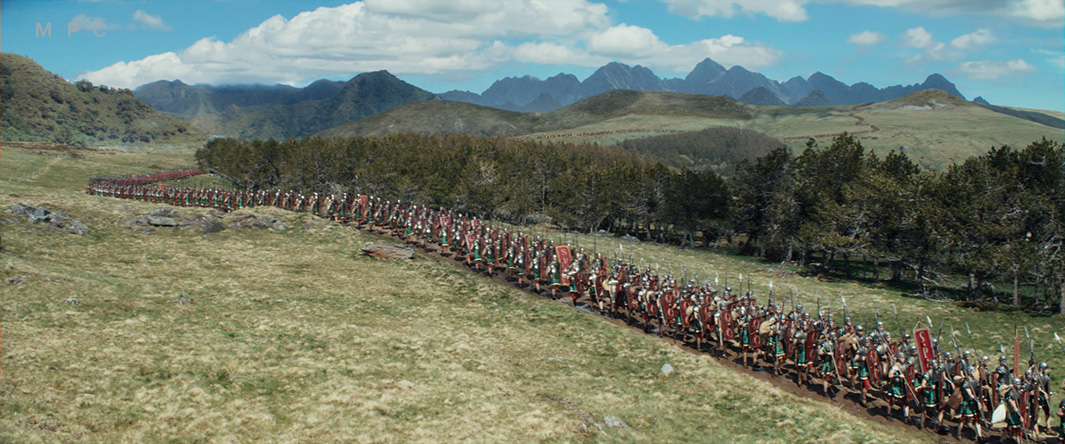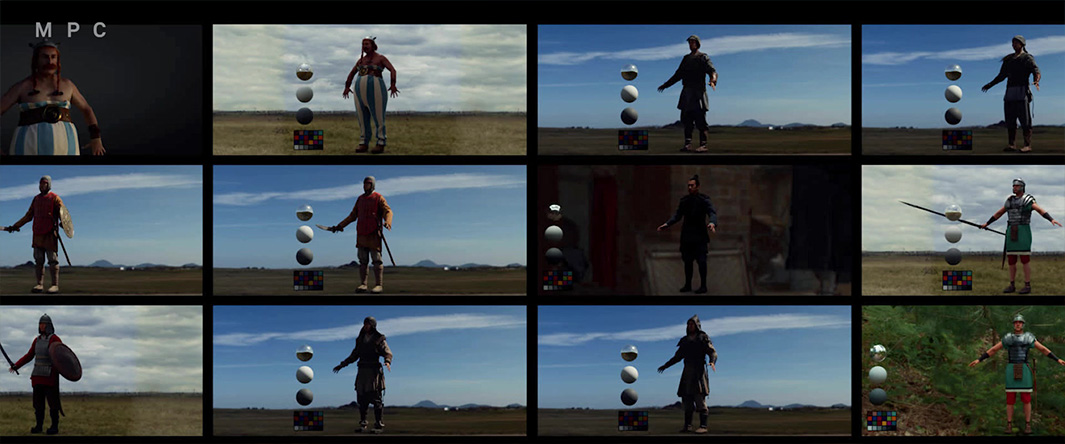MPC Paris drinks the Golaem Magic Potion for Asterix
Louis Maero, Crowd Simulation Lead at MPC Paris explains in details the challenges of creating 240 epic battle shots for The Astérix & Obélix: l'Empire du Milieu movie.
Can you present yourself and the studio?
My name is Louis Maëro, and I am currently leading the crowd simulation department at MPC Paris. MPC Paris provides comprehensive production solutions in visual effects creation and post-production for feature films and TV Shows, catering to both the domestic and international markets.

What was the size of your team and how long have you worked on this project?
The Astérix & Obélix: l'Empire du Milieu project took a long time to complete: from the initial tests to the production of assets and delivery of the final shots, it took over a year! Personally, I worked on it for a little over 10 months.
When the project started, I was the only Crowd Artist at MPC Paris. But due to the need for crowd work, we quickly sought to recruit other artists to join the team. It was the first time we had to handle so many crowd shots in a single project at MPC Paris. It was quite challenging to find crowd artists because competition in this field is fierce. It's a rare skill set that requires highly technical expertise in multiple areas. At the peak of the project, we had 4 crowd artists working simultaneously and a total of 5 artists who contributed to the project. A big thank you to Alexis Charroin, Thomas Goubard, Valentine Arles, and Yann Belly!

Can you describe the shots you had to do?
Out of our 300 VFX shots, around 240 had crowds as the main effect. It was the first time at MPC Paris that the crowd played such a significant role in a project. It was crucial, before the project started, to create tools to integrate Golaem more effectively into our pipeline in order to handle such a large number of shots.
It was also the first time we had crowds so close to the camera, and in such close proximity to identical live elements.
Most of the work involved filling battlefields with armies. There were 3 different armies, and in the final battle, all 3 armies were present in the same location. This required managing the 3 character assets, each with their variations, multiple behaviors, and interactions between all these different armies!
In battle sequences, soldiers we generated were very close, just a few meters away from the camera. However, in the midground, we were helped by the presence of the main characters that the audience primarily focused on!

Could you give a bit of details about the challenges or features used in the shots?
The biggest challenge of the project was the final sequence, a combat scene between two armies that accounted for approximately half of our crowd shots. We had to fill a gigantic plain with battling soldiers while keeping the main characters at the center of the battlefield. We had a multitude of viewpoints right in the heart of the action. The soldiers generated with Golaem were very close to the camera, and weapon collisions had to be perfect to avoid any penetrations while maintaining variety in motions, rhythms, combat styles, and soldiers' equipment.
Motion capture played a vital role in achieving the level of quality in animations and interactions between the soldiers. In some shots, we even replaced extras with soldiers generated by Golaem because the fight choreographies performed in the motion capture studio with the stunt performers were more interesting than the live action!
Did you have to integrate FX with Golaem characters? What was your workflow?
The only 3D effects that interact with Golaem elements are cloth simulations. These include elements of the characters like soldiers' skirts, or flags. When necessary, the cloth simulations were done directly with Golaem using the integrated APEX cloth plugin. In the end, I think most of the shots benefited from these cloth simulations, at least for the flags held by the soldiers.
During the project, we tested creating smoke for the dust raised by marching soldiers. However, it was ultimately not done in 3D.

How did the Layout tool help you make the shots faster?
Personally, I try to use the layout tool in a minimal way, and we try to use the crowd caches directly from the simulation. The main goal is to preserve the power of the simulation to have as many unique entities in the crowd as possible. Another goal is to keep the possibility to edit cache at the end of the project for potential last-minute modifications.
However, some shots and even sequences were designed using the Layout tool. For example, some shots with identical soldier arrangements but different environments were simulated on completely flat ground. Then, during the shot, we replaced the flat ground with the undulating ground specific to that shot. Being able to simulate the behaviors of our crowds without worrying about the ground for each shot was very convenient. The Layout tool allowed us to snap the characters to the appropriate ground at the assembly and lighting stages, saving us a lot of time in some sequences.

Is there a part of the project you are most proud of?
The majority of the shots in Asterix movie were ultimately simple in terms of behavior management. Large masses of static or marching soldiers are not the most challenging behaviors to reproduce. The biggest challenges were in terms of optimization, asset quality, and rendering, ensuring that the Golaem-generated characters were perfectly integrated among the extras.
Thus, the shots I am most proud of are those with the most complex behaviors to create, yet still maintain seamless integration of the characters. In this regard, the most notable sequence is the final one, where the Roman soldiers flee after losing. If I were to watch one of those shots again, I probably wouldn't even be able to tell where the boundary between the live soldiers and the added soldiers lies.

Anything else you would like to add?
Unfortunately, I didn't keep track of the exact number, but it is undoubtedly on Astérix that I worked on a shot with the largest number of generated characters! The record kept increasing as the project progressed and the number of armies on the battlegrounds grew.
In the biggest shot of the movie, we had over 200,000 soldiers!

Learn more
